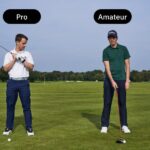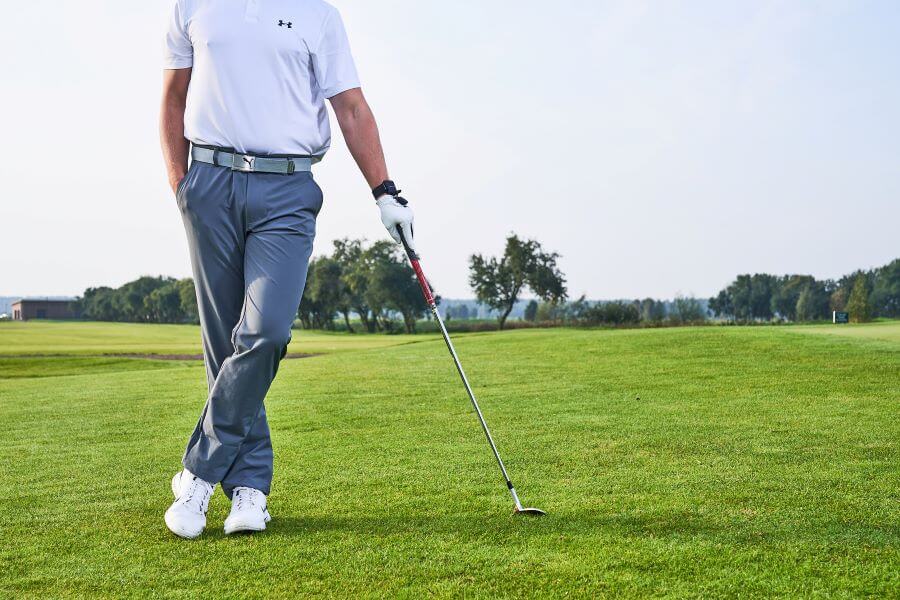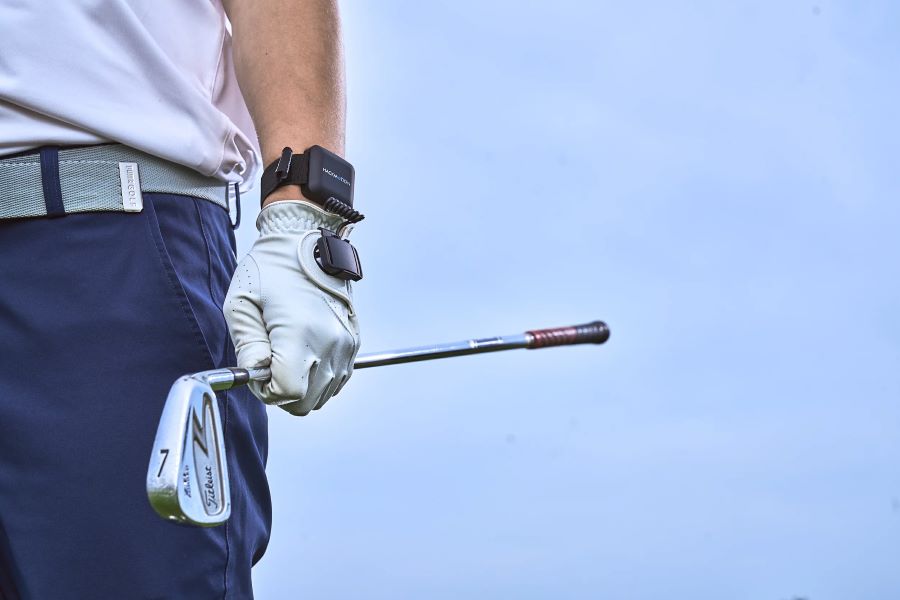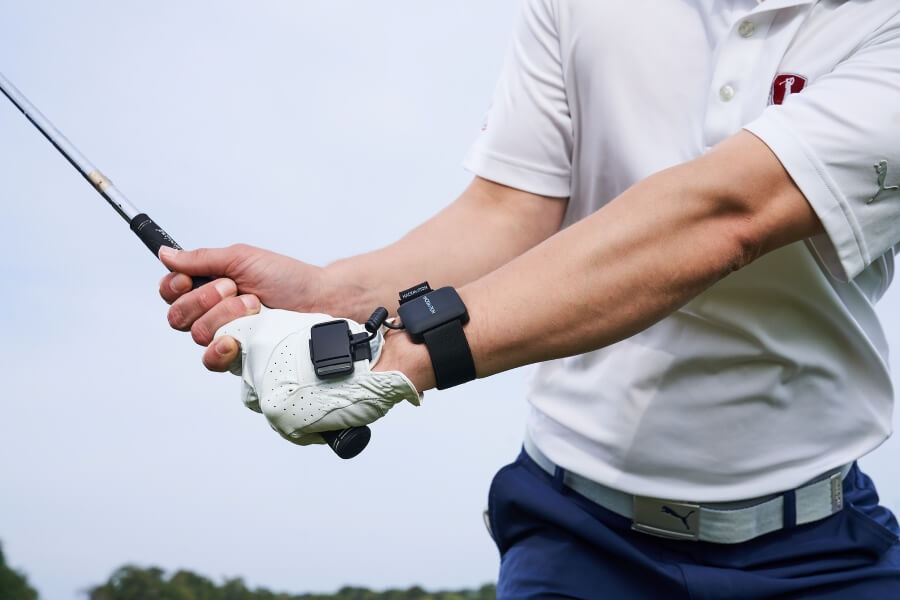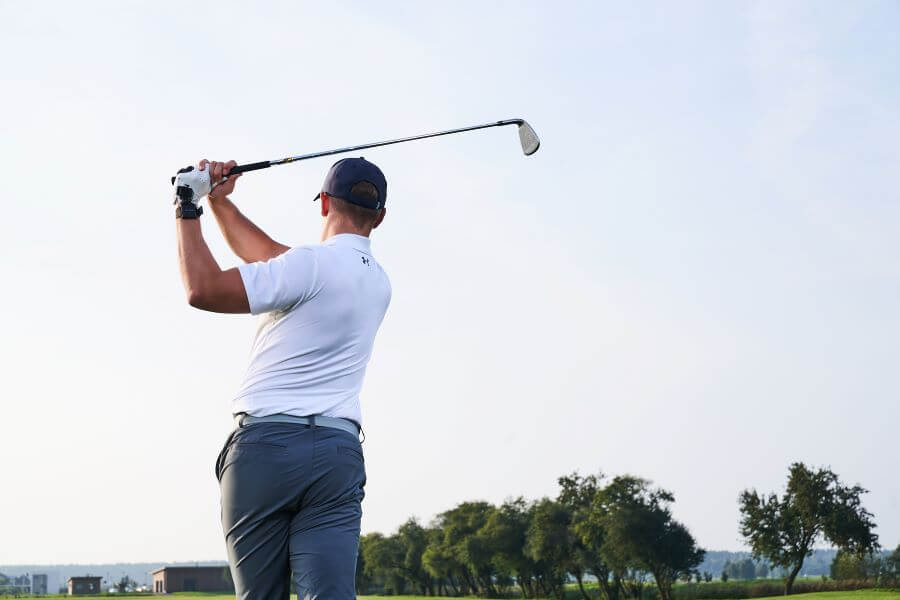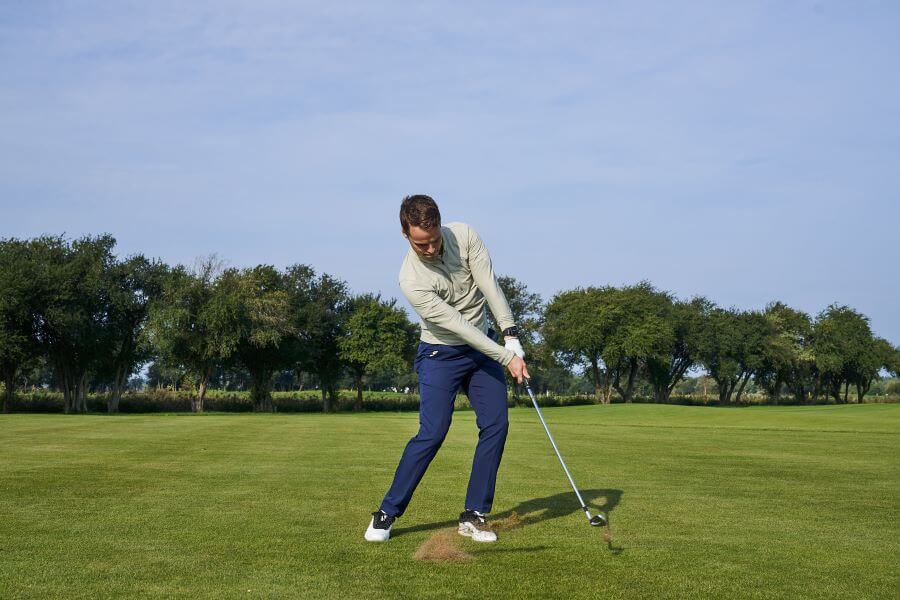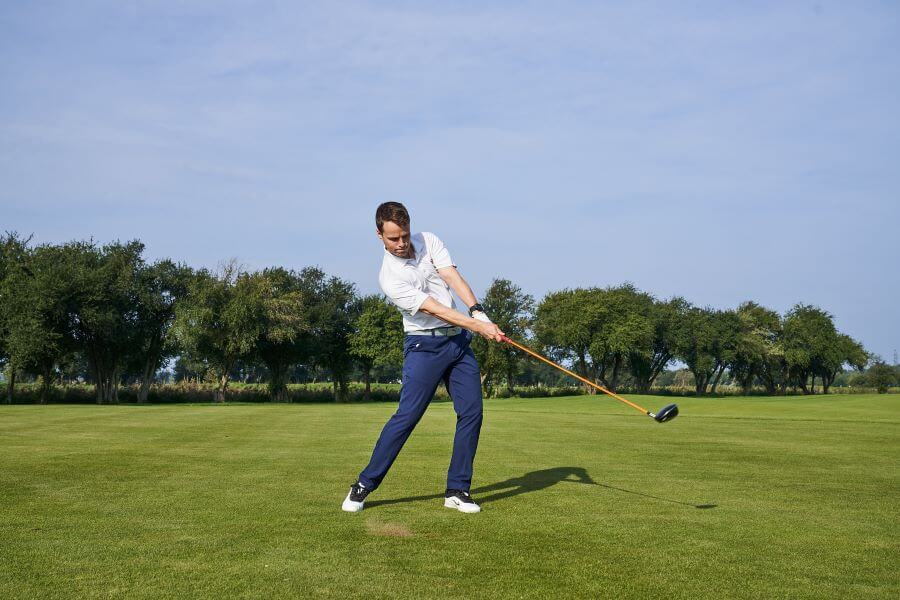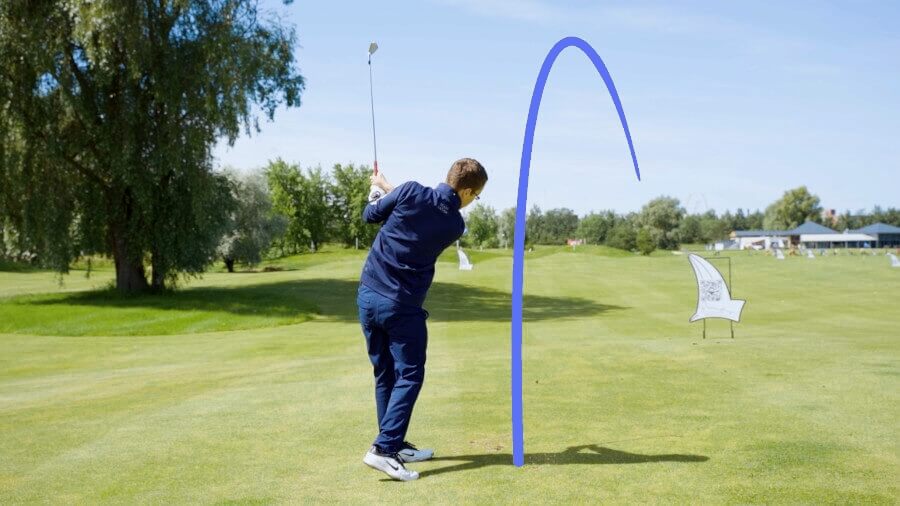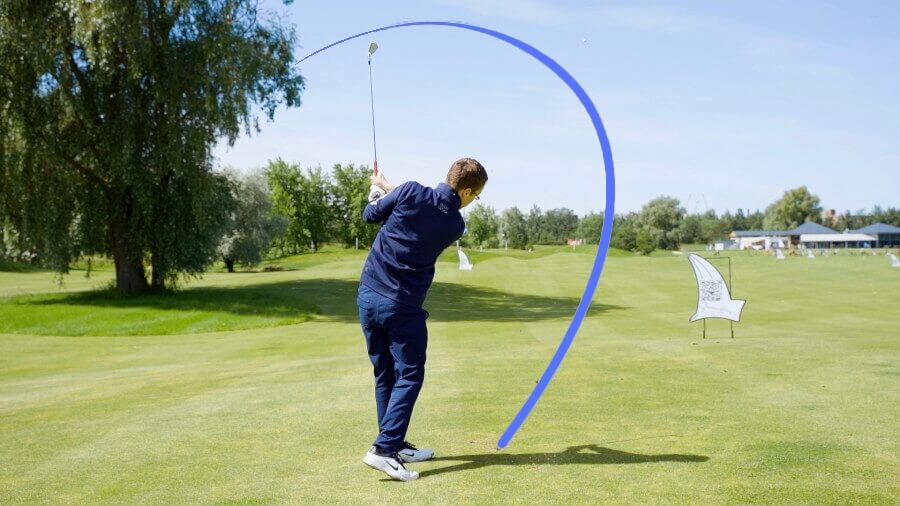Why Do I Slice My Driver But Not My Irons? (Answered!)
When you are struggling with the driver, issues are magnified. Instead of missing just to the left or the right of the green as you might with an 8 iron, you’ll miss three fairways over.
It’s frustrating, but you aren’t alone.
Slicing with the driver but not the irons is a common mistake in the game of golf, and it’s something that even low handicappers struggle with.
The long length of your driver, the changes in setup, and the swing path all lead to this uncontrollable slice, but there is more to it than that.
Wrist angles play a big part in this, and until you understand just how they work, you might still be hitting your second shot from three fairways over.
Why Do I Slice Driver But Not Irons? (Key Takeaways)
If you don’t have time to read our entire article about why you slice your driver but not your irons, here are the most important things you can walk away with.
- The slice is caused by a clubface that is open to the target and open to your path at impact.
- Because the driver is longer and more flexible than the irons, it’s difficult to control.
- If your golf shaft is too stiff for you, the ability to square the clubface at impact is considerably reduced; a proper club fitting can help lessen the amount of slice in your drive.
- A weak grip at setup reduces the amount of control you have of the clubface, making it harder to feel the proper release and close of the clubface at impact.
- Wrist angle controls the clubface (even on the drives); golfers with too much extension in their lead wrist at the backswing don’t have the time or ability to return the wrist to flat and hit a straight driver shot.
- Proper forearm rotation, starting from the top of the backswing down through impact, helps close the toe of the driver and allows for a straighter golf shot.
- The lower the loft of the driver, the harder it is to hit it straight; try adjusting the loft of your driver by one degree to see if it improves overall ball flight.
Short on time? Here are 3 simple drills to improve driver distance and consistency that you can take to the driving range today. Check out the drills here!
Contents
Why Do I Slice My Driver But Not Irons?
There are numerous reasons for slicing your driver instead of your irons, ranging from club path to stiff shaft flex and increased torque.
In addition, catching the ball in the heel of your driver or swinging a lower loft can also encourage a nasty right-curving shot from the tee.
1. Weak Grip
A weak grip means the V-shape points to the left side of your head if you are right-handed, and the opposite applies to lefties.
Employing this grip leaves you unable to control the clubface and square it up, leading to impact.
While a neutral grip is recommended, you can still slice the golf ball when it combines with a cupped lead wrist on the backswing.
Use HackMotion to establish a consistent grip position each time you swing the club. Check for differences in lead wrist extension between your driver setup and your setup with your irons.
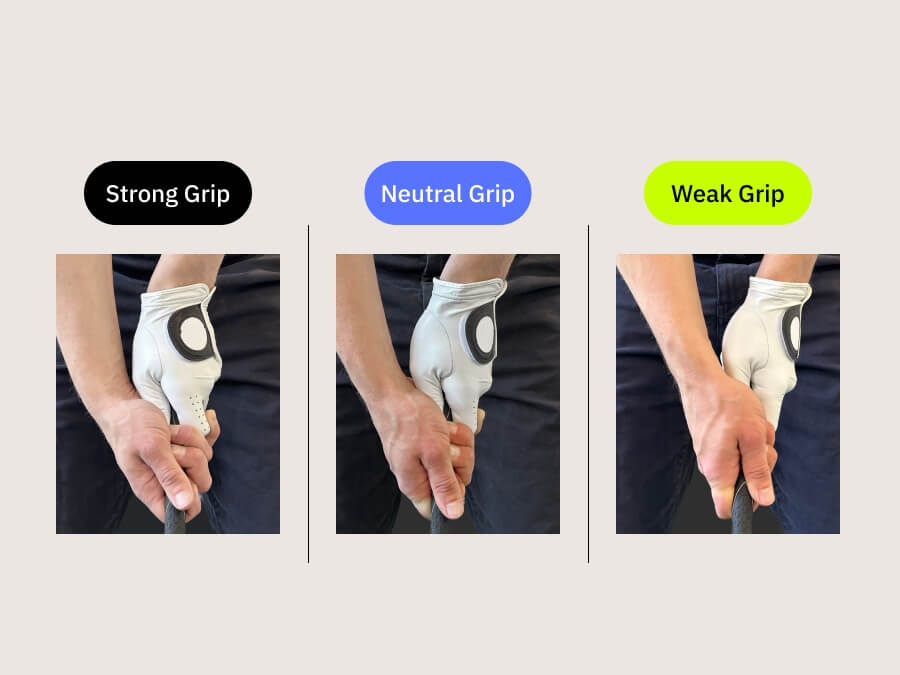
2. Inside Club Path
Mark Crossfield (video below) explains that drivers and irons follow different club paths because of the shaft length and your ball position.
A driver requires you to hit the ball after the low point of your swing, resulting in the face catching the ball on your upswing.
Typically, the clubface starts to travel along an inside path after reaching the low point of the swing. Following this path causes your driver to cut across the golf ball and impart sufficient sidespin for a slice.
Ideally, you want the clubface to catch the ball following an outwards path, with a closed angle, to produce a moderate draw.
The key takeaways from the video include:
- Drop your trail foot back half an inch.
- Drop your trail shoulder down a fraction.
- Set yourself up leaning slightly away from the ball.
- Push the handle forward just a little to promote a penetrating flight.
- Aim a little left of the target and play for a slice until you get the clubface squared up at impact.
3. Striking the Ball in the Heel of the Driver Head
A driver clubface carries a curved design, aggravating off-center hits and increasing the sidespin imparted on the golf ball.
When you hit the ball in the heel, it amplifies the right curve on the ball, leading to a sliced shot. Conversely, striking the ball in the toe will create sidespin for a left curl or a draw.
The goal, however, is to strike the ball in the center of the clubface.
Modern drivers are equipped with expanded sweet spots in the center of the clubface, restricting spin and accelerating ball speed for long, straight drives. One of the most significant indicators of how far a golf ball travels is how close to the center of the clubface it was hit.
If you want to get great at distance and accuracy, learn to hit the center of the face.
4. Excessively Stiff Shaft Flex
Golfers with slower swing speeds require flexible shafts to spring into the ball at impact and square the clubface.
A stiffer shaft does not offer this luxury, and it causes slower swingers to lose power on the downswing, restricting energy transfer and ball speed. Ultimately, a stiffer shaft causes slow-swing-speed golfers to lose distance and accuracy off the tee.
Players launching a driver between 84 to 96 mph are built to swing a regular flex shaft, while 72 to 83 mph works with a senior flex. On the higher side, shaft manufacturers design a stiff flex for driver swing speeds between 97 and 104 mph.
Super fast swing speeds exceeding 105 mph are better equipped to handle an extra stiff or tour extra stiff shaft. If unsure which golf shaft is best for your game, head for a golf club fitting and test to see if your equipment is causing your slice.
5. Cupped Wrist
A cupped wrist at the top of the backswing requires players to morph into a bowed position at impact to square the clubface up.

The late Ben Hogan managed this transition flawlessly, but the average golfer battles to make the transition. A cupped wrist at the top of the backswing without a transition at impact leaves the clubface open.
As a result, you impart slice side spin on the golf ball and produce a nasty slice.
Wearing the HackMotion device while you practice swinging your driver can eliminate the cupped wrist position at the top of the swing. When you get to more of a flat wrist position, it’s easier to square the clubface at impact.
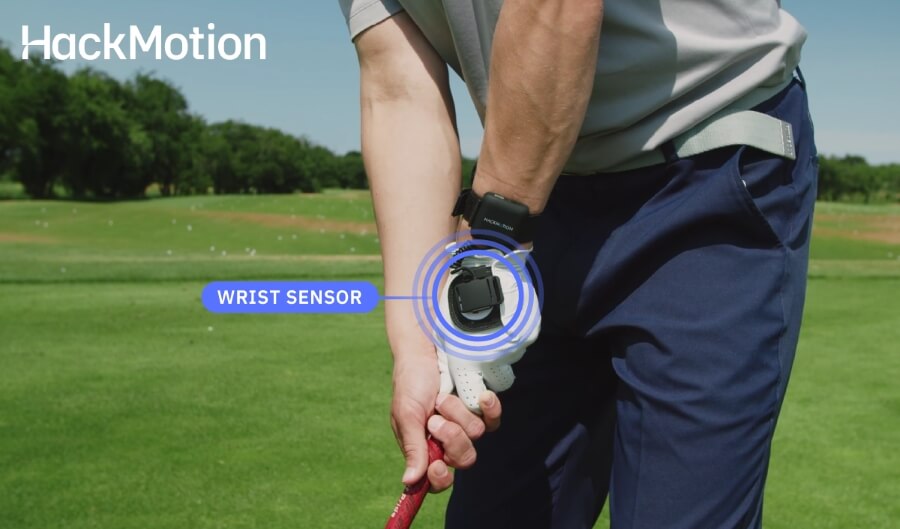
6. Excess Weight in the Toe
Some players struggle to manipulate the clubface closed at contact when drivers are equipped with added weight in the toe.
As a result, it causes the clubface to remain open and prompts flight to the right of your target.
The solution is to add extra weight to the heel of the golf club to help the toe release easier, prompting it to square at impact. With an adjustable driver, this should not be all that hard to do.
7. Flat Lie Angle
A clubface with a flat lie angle aims to the right of the target for right-handers and to the left for lefties.
That means you should close your clubface slightly at impact to keep it square to the target.
Failure to alter the clubface position at impact causes the golf ball to start and finish right of your intended target.
Check your lie angle with your driver; even though the lie angle in the irons is so important, the lie angle in the driver also matters.
Why are Irons Easier to Hit Straight?
The core reasons why players hit iron shots straighter are due to their shorter shafts, CG, ball position consistency, and weaker lofts.
1. Shorter Shaft
Irons have shorter shafts that lead to a different clubhead speed, attack angle, and clubface angle.
The reduced size causes you to strike the golf ball on the way down, often along an outwards path, producing a straight or draw trajectory.
Conversely, the longer driver strikes a teed-up golf ball, requiring you to hit it after the low point of the swing.
This typically sends your clubface along an inside path, causing you to cut across the golf ball and impart increased slice side spin on the golf ball. Besides the ball position, the shorter shaft on the irons simplifies controlling the clubface into contact.
Amateur golfers have a better chance of producing a cleaning, accurate shot with shorter clubs than the longer shafted driver.
2. Center of Gravity Position
The center of gravity (CG) position on the irons is directly behind the clubface or in the sole. On the other hand, drivers feature it back in the clubface.
Its CG position and curved clubface promote a right curve on strikes out of the heel, causing a push, slice, or fade.
However, irons feature a flat face, which creates less side spin on off-center hits, improving your chances of a straight shot. It should be noted that side spin and backspin are two different things.
Golfers with high backspin rates on their irons are not more likely to slice the ball; they are more likely to control the shot as it comes down to the ground.
3. Weaker Lofts
A weaker lofted club has higher amounts of loft. The concept seems a bit backward when thinking about weak and strong.
For instance, if a 46-degree pitching wedge is made stronger, it would be bent to 43 degrees. Stronger lofted clubs travel further than weaker lofts.
Higher lofted clubs produce greater backspin. The enhanced spin leads to a higher apex and fewer yards, reducing the severity of sliced shots.
4. Mental Game
Every golfer has a different way of approaching the game from a mental standpoint.
However, after analyzing more than 1,000,000 swings with the HackMotion, we can tell you that most golfers go after their driver with more speed and aggression than their irons.
This extra speed is a great benefit to your game.
The problem is that unless you have your golf club in the right position and things like your wrist are in the proper position, you won’t hit the ball straight.
Keep your mentality more about hitting the ball straight and hitting your target than about hitting your farthest drive.
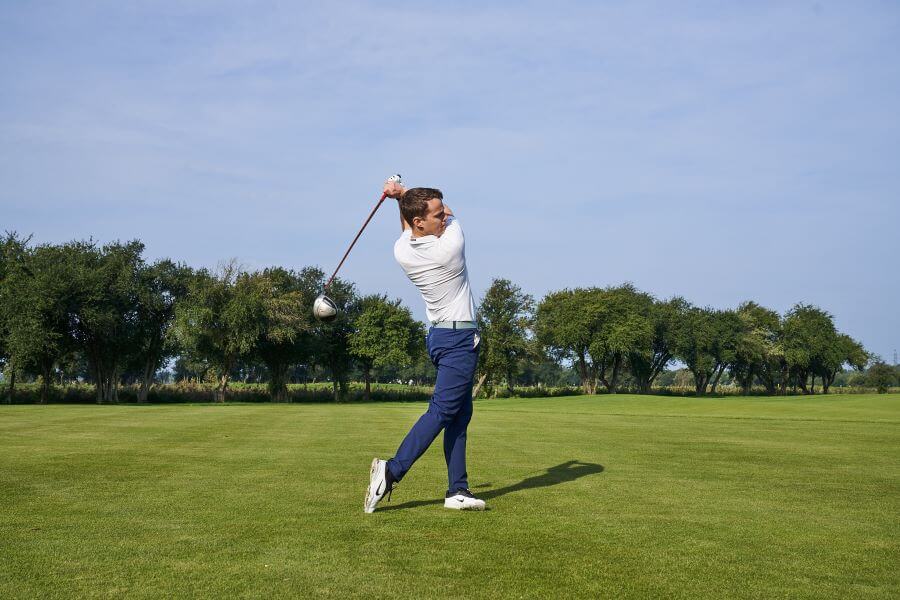
How to Fix Your Driver Slice
There are multiple fixes to get rid of your driver slice. The ultimate goal is to square the clubface at the impact.
Square the clubface at contact to generate straighter ball flight and improved accuracy from the tee box.
1. Neutral Grip
If your grip is weak and you are slicing every shot, I suggest strengthening it slightly to improve your control. By doing this, I mean adjusting the position of your hands so that the V-shape runs directly up to your nose.
Do not squeeze the club harder and make your knuckles white.
A neutral grip gives you the freedom of movement to release the club from the top of the swing for added power.
Plus, you can guide the clubface to a square position at contact for a straighter tee shot.
Once you get your club into the neutral position, take some swings with the HackMotion. Keep this data as it will give you insight into what your wrist extension and flexion looks like with a neutral grip position.
2. Bowed Wrist at the Top of the Swing
Although Ben Hogan thrived with a cupped wrist at the top of his swing, I recommend working on bowing or at least flattening your wrist at the top.
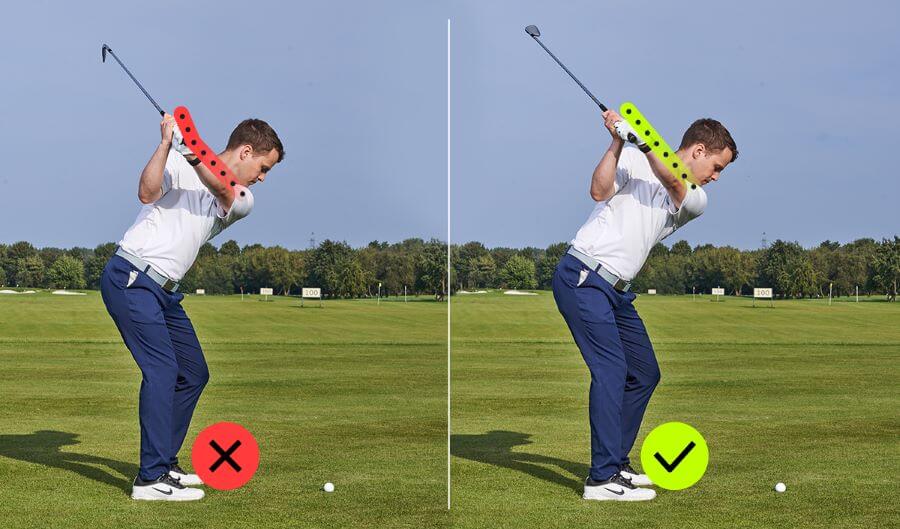
This position requires very little wrist transition on the downswing as it puts you in a prime position to maximize speed and get your clubface level at impact.
Collin Morikawa displays an excellent example of a bowed wrist at the top before using his rotation to drive the clubface to the golf ball.
After analyzing over 1,000,000 golf swings at HackMotion, we know that golfers with the most speed and accuracy are in this position at the top of their swing.
| Player Handicap | Flex at Address | Flex at Top | Flex at Impact |
|---|---|---|---|
| Less than 10 | 19.3 | 14.5 | 3.6 |
| Between 10-25 | 19.5 | 17.0 | 9.0 |
| More than 25 | 18.8 | 24.2 | 10.7 |
Understandably, wrist angles may confuse newbies, but the sooner you understand their relevance, the faster you produce more accurate drives.
One approach to optimizing your wrist angles with a driver is to train with our HackMotion wrist sensor. It guides your wrist position to deliver greater power, accuracy, and control in your golf swing.
The HackMotion wrist sensor also has audio feedback that allows you to get the instant feedback you need while working on fixing a slice.
3. Place Extra Weight in the Heel
If you play a driver with a moveable CG weight, I recommend shifting mass to the heel for a draw-bias setup.
The positioning helps your driver face fight slice side spin and generate straighter ball flight for improved fairways in regulation record.
Alternatively, should your driver carry no moveable weights, you can apply lead tape to the heel for additional weight. While this method is not as precise as an adjustable weight, it still achieves the same purpose.
Getting fitted for a driver that fits your game is a good choice, but I do prefer to learn how to fix a slice instead of putting too many bandaids on your golf game.
4. Adjust to a Standard Lie Angle
Most modern golf drivers are equipped with an adjustable hosel, enabling you to manipulate the clubface loft and lie angle.
I recommend adjusting the lie angle to a standard setup if you utilize a flat lie angle and experience severe slices.
A standard lie angle keeps your clubface level and points at your intended target at setup. This helps you square the clubface at contact. However, optimize your wrist position and hip and shoulder rotation to execute efficiently.
Drills to Fix a Slice with a Driver
If you are a golfer that slices the ball with your driver, drills are often the best way to fix it. Here are a few of our favorites.
Add in the Hook Ingredients
Adam Bazellegette talks about how golfers can learn what it takes to hit a hook and then add a bit of that into their golf swing. The hook ingredients, as he calls them, are very much related to the setup, spine tilt, and swing path.
Left Hand Point Toward the Ground
Another great drill to fix the slice is to ensure you are pointing the lead wrist towards the ground on the takeaway.
Eric Cogonro walks through how to fix a slice with a driver and gives you drills and pre shot routine additions that you can add to your swing.
Throw a Ball Drill
Danny Maude created this “Throw A Ball” drill that helps you see and feel exactly what it takes to square a clubface through impact.
This drill may look a little funny at first; however, you’ll see why it’s so effective when you watch the positions he gets into in slow motion.
Try a variety of drills to get to the root cause of your issues and straighten out your slice.
FAQ
What causes a slice with a driver?
An open clubface at contact is the ultimate cause of a slice with a driver. A weak grip, inside the club path and striking the ball in the heel can aggravate sliced shots. In addition, a cupped wrist on the backswing, increased shaft flex and torque, and a flat lie angle can shove the clubface open at contact.
Does more loft reduce slice?
Yes, more loft does reduce slice. A weaker lofted club generates increased backspin, resulting in a higher apex, shorter shot, and less room for an extreme slice shot.
Will a stiffer shaft help my slice?
No, a stiffer shaft will not help your slice. In fact, it worsens it for slower swing speeds. The lack of torque and flex provides limited spring assistance into impact, preventing slow swingers from squaring the clubface at contact. Instead, they leave it open and produce a slice or a fade at best.
Final Thoughts
Slices are caused by an open clubface at impact.
To fix your driver slice, I recommend operating with a neutral grip and bowing your wrist at the top of the golf swing. In addition, as far as equipment tweaks go, you can add extra mass to the heel of your driver and adjust the face to a standard lie.



